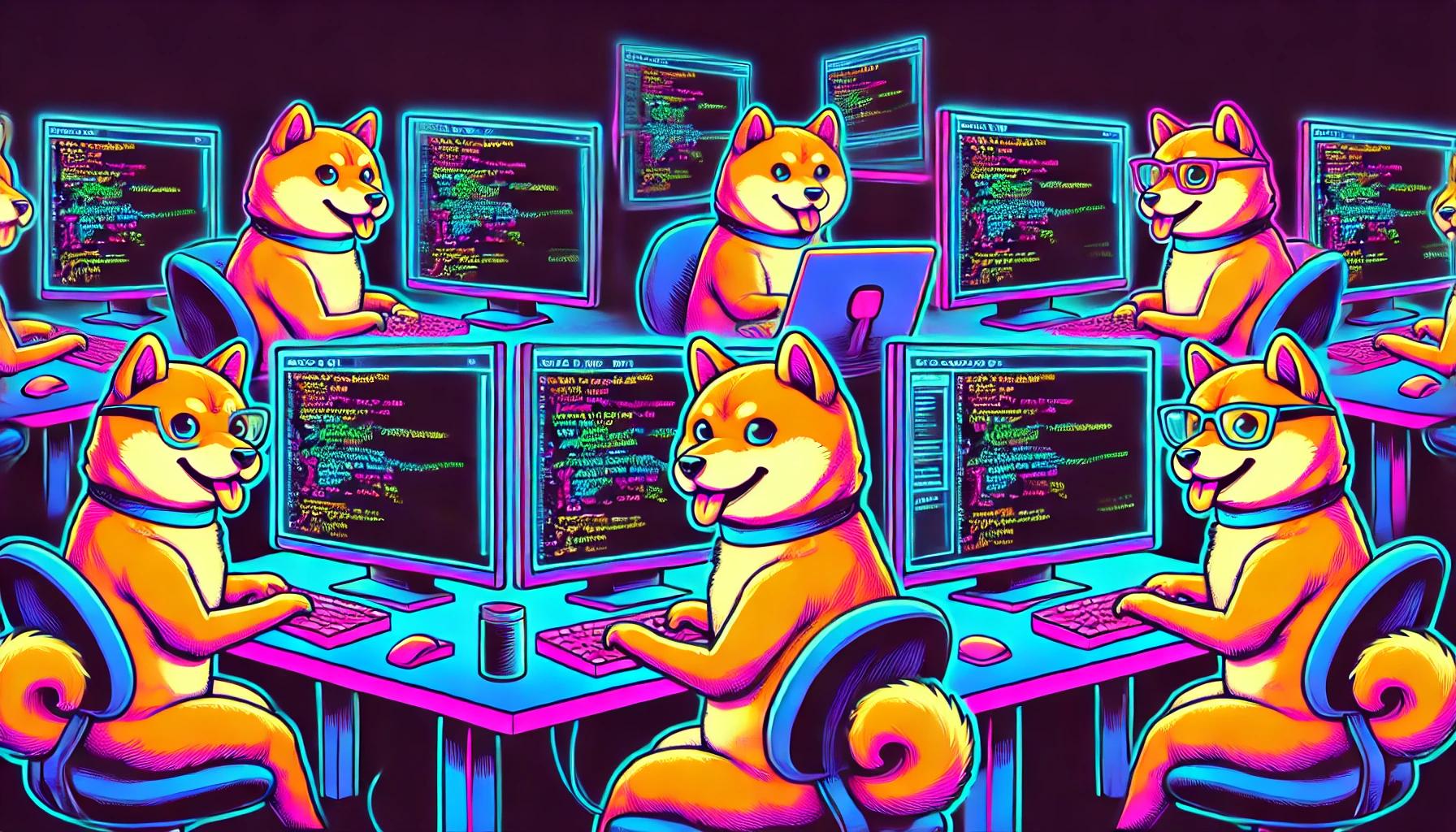
Laika and Qed Protocol are among a growing cohort of projects working to bring advanced web3 functionality to Dogecoin.
An increasing number of projects are working to bring smart contract functionality to the Dogecoin ecosystem.
On Sunday, Laika, a Layer 2 solution for Dogecoin, launched on mainnet. The project claims to comprise the first Layer 2 network in the Dogecoin ecosystem.
“Starting on July 28th, you will be able to interact with the first Layer 2 on Dogecoin and become one of the earliest users of DogFi,” theLaika Foundation said on Medium.
Alongside introducing smart contracts to the Dogecoin ecosystem, Laika also aims to improve transaction speeds. The project claims block confirmation speeds of 3 seconds, compared to one minute on Dogecoin. However, Laika’s testnet performance reveals average block times of 4.3 seconds.
On Sunday, Laika’s testnet hosted 2,820 daily transactions, down from its all-time high of 24,600 transactions on July 16. Overall, the testnet processed a total of 608,039 transactions and hosted 42,558 wallets. On the same day, the Dogecoin network processed 197,000 transactions, according to Messari.
The race to bring smart contracts to Dogecoin
While Dogecoin started as a light-hearted fork-of-a-fork of Litecoin in 2013, developers are working to mature the network beyond merely hosting memecoin transfers and mining operations.
On July 26, Qed Protocol proposed a new Dogecoin opcode that would pave the way for DeFi applications and NFTs to launch natively on Dogecoin. The project said its proposal has support from top mining pools including AntPool, ViaBTC, and F2Pool.
“With the introduction of this opcode… the Dogecoin Network will effectively be the first PoW secured chain at feature parity with blockchains like Ethereum and with the scalability of Solana,” Feldman said.
QED is also working to launch a zero-knowledge Layer 2 rollup on Dogecoin.
In 2022, the Dogechain sidechain sought to pioneer smart contract functionality within the ecosystem. Dogechain uses the Polygon Edge tech stack to offer compatibility with the Ethereum Virtual Machine (EVM), Ethereum’s core smart contract engine — allowing developers to port dApps built for EVM onto the network.
Dogechain hosted nearly 46,000 transactions on July 28, down from around 103,500 transactions on July 3, according to the Dogechain explorer. However, the network’s total value locked (TVL) is just $3.49 million, according to DeFi Llama.
Developers also sought to bring inscriptions onto Dogecoin last year in response to their surging success on Bitcoin. In February 2023, Doginals inscriptions went live, followed by Cardinals in May 2023. The Cardinals team followed up that same month by launching the DRC-20 fungible token standard on Dogecoin — drawing inspiration from Bitcoin’s BRC-20 standard.
Bridging Dogecoin to smart contract networks
While some projects are seeking to introduce EVM capabilities to the Dogecoin ecosystem, others are looking to tap into Dogecoin’s vibrant community and strong adoption by enabling holders to bridge their DOGE onto networks that natively support smart contracts.
In June, the Dfinity Foundation began developing ckDOGE, offering on-chain alternative to wrapped tokens that allows users to bridge DOGE from Dogecoin onto the Internet Computer network. The token leverages chain-key cryptography, which enables cross-chain interoperability without using a centralized architecture, unlike conventional token wrappers.
Flare Network is also working on a protocol enabling cross-chain DOGE bridging in the form of F-Assets, allowing the token’s use in smart contracts on the Flare network. Flare launched F-Assets in open beta on June 4 following its November 2023 testnet deployment.
DOGE’s price is up 0.74% in the past 24 hours, according to The Defiant’s crypto price feeds.
Read More: thedefiant.io








 Bitcoin
Bitcoin  Ethereum
Ethereum  Tether
Tether  XRP
XRP  Solana
Solana  USDC
USDC  Dogecoin
Dogecoin  TRON
TRON  Cardano
Cardano  Lido Staked Ether
Lido Staked Ether  Wrapped Bitcoin
Wrapped Bitcoin  Hyperliquid
Hyperliquid  Wrapped stETH
Wrapped stETH  Sui
Sui  Chainlink
Chainlink  Avalanche
Avalanche  LEO Token
LEO Token  Stellar
Stellar  Toncoin
Toncoin  Bitcoin Cash
Bitcoin Cash  Shiba Inu
Shiba Inu  USDS
USDS  Hedera
Hedera  WETH
WETH  Wrapped eETH
Wrapped eETH  Litecoin
Litecoin  Monero
Monero  Polkadot
Polkadot  Binance Bridged USDT (BNB Smart Chain)
Binance Bridged USDT (BNB Smart Chain)  Ethena USDe
Ethena USDe  Bitget Token
Bitget Token  Pepe
Pepe  Coinbase Wrapped BTC
Coinbase Wrapped BTC  Pi Network
Pi Network  WhiteBIT Coin
WhiteBIT Coin  Aave
Aave  Uniswap
Uniswap  Dai
Dai  Ethena Staked USDe
Ethena Staked USDe  Bittensor
Bittensor  OKB
OKB  Aptos
Aptos  Cronos
Cronos  NEAR Protocol
NEAR Protocol  BlackRock USD Institutional Digital Liquidity Fund
BlackRock USD Institutional Digital Liquidity Fund  Jito Staked SOL
Jito Staked SOL  Internet Computer
Internet Computer  Ethereum Classic
Ethereum Classic  sUSDS
sUSDS